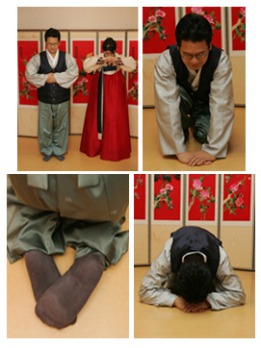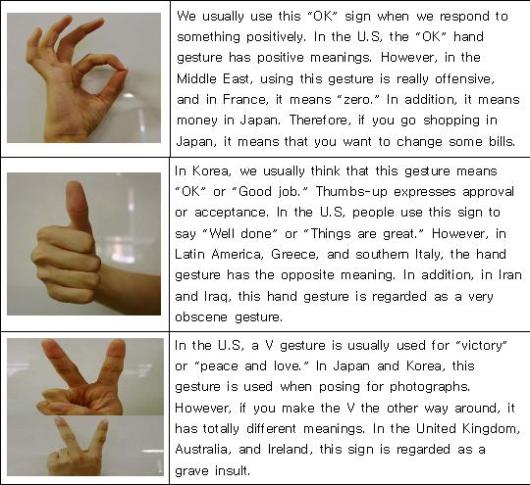Course Name: Gospel and Global Meida Cultures DM6055
Professor: Mary Hess Ph D
Student : Jung Seok Lee
Date: July 25, 2013
In the book, The Christian Imagination, author Willie James Jennings said, “ It was absolutely necessary that I narrate Christian identity from within the Gentile-Jewish relational matrix and specifically the epistemological implications of Gentile existence for the social performance of Christianity.”(292)
Every community has its own language. Any time a group of like-minded people comes together to discuss what is important to them. It is critical that each person understands what are there is saying. They develop a kind of shorthand among themselves, and cultivate ways of sharing information, interests, and convictions that are particular to that group. All Christians should have the awareness of the truth. We must be faithful to the feeling of self-satisfaction for neighbors to serve diverse social life. Christians should have self- determination of the grace of the cross of Christ through the church. We live actively in the world because we specifically to get taken care of all reality. As a pastor, I am committed to engaging my congregation in long-term dialogue about our identity in Christ and our calling to embody the gospel where we are. The church of Christ is a community of those who repent Jesus Christ as savior and the individuals who are responsible to each other. Harmony between each other is formed to make the atmosphere feel more and more the necessity of the gospel in the life of faith. The most important thing in the world is living in Jesus to create a community of love and follow Jesus. When we do this, Congregation life can be maintained without problems.
The author Yochai Benkler describes in The Penguin and the Leviathan, “How to build human systems for centuries because our motivations are so fundamentally diverse.”(248)
Leaders need to help develop new practices and commitments for human systems and to shape new ways of community life.I have some ideas to understand intercultural communication.
1) Oneself: What are the cultural patterns you bring to the conversations?
Observe and interaction.
2)Empathy: How can you foster your own empathy for others?
Trust.-to build trust are needed personal and group narratives.
3) Power: How is power operation in your setting?
Power is about roles and authority which means thought about responsibility and power.
Community: What practices do the various cultures bring into the interaction that
could serve everyone?
Who can offer cultural explanations or who can be bridge builders for trust and cooperation.
4) Gratitude: What narratives, traits and commitments are available for Christian
faithfulness, and intercultural life?
God’s initiatives and human faithfulness- Gratitude is not a behavior, somewhat which guides a church’s actions as we identify and receive God’s grace.
The author Elizabeth Drescher and Keith Anderson describe in Click 2 Save, “Digital ministry calls us into new spaces and invites us to develop new relationships with people from our own communities,with neighbors…inside our church or organization.” (127)
Digital technology is also driving dramatic changes worldwide. Digital technology is changing the way people work, think, behave, and believe. This is putting tremendous stress on society and on the church including the pastor’s ministry. Large portions of the church have not yet adapted to broadcast culture and now we have a new paradigm to deal with. We are still not sure about how the Internet is affecting people’s attitudes and beliefs about the traditional aspects of the church as an institution. Hence, pastors should think about how to connect and handle this issue in view of their social position.
In the book, Here Comes Everybody, author Clay Shirky said, “ A good social tool is like a good woodworking tool- it must be designed to fit the job being done, and it must help people do something they actually want to do.” (265)
When aspiring to obtain a theological perspective related to social media, human beings will find effective ways to transfer knowledge. What we affirm in God is inspirational for us. We need to share a timeless message in ways that people can understand and use. We must strive to share consistent values and ideals even as the media changes. I suspect that there are core values in ministry that remain constant, such as listening to and valuing the experiences of people as whole human beings and spending time together in activities that are not overtly religious. This not only helps us navigate the waters of ministry in today’s society, it also helps us to be more like God.
The author Howard Rheingold describes in Net Smart, “In recent years, as so many more people have started to rely on the Web for such vitally important form of information as news, scholarly research, and medical as well as investment advice, the lack of general education in critical consumption of resources found online has become a public danger.”(81)
Enjoys interacting with many people and connects to social media users and shares personal content that helps to deepen connections.Ministry is being changed in many ways by the social media of today. Facebook, twitter and other social media break down the walls of the church as we have known them and also changes the shape of church communities. In the morden age, people probably cannot avoid incorporating social media in their life and the future.
Title : Korean Hand Gestures
Course Name: Gospel and Global Meida Cultures DM6055
Professor: Mary Hess Ph D
Student : Jung Seok Lee
Date: July 25, 2013
Introduction
People around the world use body language and gestures to send specific messages. Understanding the meanings of gestures and body language and being able to use them correctly are important parts of communicating in a foreign country. Gesture is a movement with a part of our body, especially our hands or head, to show what you mean or how you feel in conversation. In other words, effective gestures can be used like verbal language. Just like each country has a different language, each country has different gestures too. For instance, in Korea, for our greeting, we bow our heads, but in America, they wave their hands.
Gestural theory
The gestural theory states that human language developed from gestures that were used for simple communication.
Two types of evidence support this theory.
1. Gestural language and vocal language depend on similar neural systems. The regions of the cortex that are responsible for mouth and hand movements border each other.
2. Non-human primates can use gestures or symbols for primitive communication, and some of their gestures resemble those of humans, such as the “begging posture”, with the hands stretched out, which humans share with chimpanzees.
Korean Greetings:
A bow is the traditional and respectful greeting, but it is usually accompanied by a handshake between men. As a sign of respect, the left hand may support or rest under the right forearm during the handshake.
Women shake hands less often than men do.
Among friends and relatives, a simple nod is acceptable. Children bow when greeting adults.
A common greeting between peers or for subordinates is Annyong haseyo? (‘Are you at peace?’ or more simply, ‘hello’).
Children often greet each other with a simple Annyong? To show respect for a social superior, one adds an honorific “ hashimnikka?” after the common annyong.
Korean Gestures:
Proper courtesy is shown with gestures. Items are passed with both hands or the right hand holding the item while the right forearm or wrist is grasped by the left hand.
Koreans beckon by waving the fingers together with the palm down. Beckoning with the index finger is rude. Facial expressions are often more important than body language in communicating unspoken messages. When embarrassed, a person may respond by laughing. People may also laugh if they are uncertain of how to respond.
Symbolic Meanings of Hand Gestures between different Cultures:
Video: How to use Korean Hand Gestures
http://www.eatyourkimchi.com/how-to-use-korean-hand-gestures
Biblical Content
To cross one’s fingers is a hand gesture commonly used to implore God for protection, as well as to wish for good luck. The gesture is referred to by the common expression “keeping one’s fingers crossed” or just “fingers crossed” and has also been historically used in order to allow believers to recognize one another during times of persecution.
A painting depicting Jesus with his fingers crossed at the Last Supper.
Elements from the faith tradition
The raising of hands in prayer is a gesture signifying one’s request to God (Psalm 141:2 ; 1 Timothy 2:8 ). The raising of one’s hands can also be a symbol of blessing (Leviticus 9:22 )
The laying of a hand or hands on someone can mean violence (Genesis 37:22 ), or it can mean favor and blessing if it occurs on a someone important like a son (Genesis 48:14 ) or in healing (Luke 4:40 ; Acts 28:8 ).
The placing of hands on someone’s head shows favor and blessing, such as in the acknowledgment of an officer (Acts 6:6 ) or in the coming of the Holy Spirit (Acts 8:17).
Are Hand Gestures Useful in an Argument?
Here are some ideas about the usage of hand gestures in an argument:
1) The gestures that will be used depend on the type of society the people that are in the argument are coming from. Their own gestures clearly explain what exactly the person wants to convey, if the opposed is from the same society. It helps clear things up with the people involved.
2) Hand gestures are more threatening than regular uses of voice and they portray that a person is more aroused than he or she ought to be. The most important thing to do in an argument is attempting to understand the other person’s explanation and their reasoning. If hand gestures are used, he or she may think that they are being ignored.
3) Hand gestures signify a usage of the body to communicate, which means they can be useful.They can be very compelling and hold lots of potential in an argument.
Conclusion
Gestures are movements of parts of our body, especially from our hands or head, to show what we mean or how we feel in conversation. The significance of the gestures can differ from one country to another. Hand gestures also have a wide range of meanings and they are also emblematic of different religious and cultural settings.






